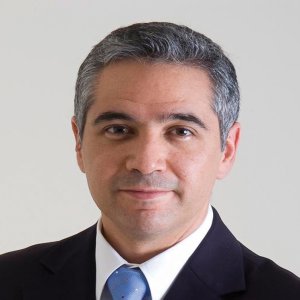Anticipating Passenger Trends

STORY INLINE POST
Q: What have been IAMSA’s greatest contributions to the development of the Mexican automotive industry?
A: All purchases of the groups that make up IAMSA, including our partners, make IAMSA the largest consumer of coaches and buses in Mexico. The production capacity of all automakers in Mexico, including Volvo, Irizar, Dina, Mercedes Benz, Beccar, and more, should be about 4,000 buses annually. The companies that make up IAMSA buy 700 units annually. We also support our companies in the financial aspect and obtain credit for partners to acquire buses. We seek to be at the forefront of technology in terms of what the industry needs both nationally and internationally. For example, when we made the decision to acquire 2,000 Volvo buses, we gave the right incentive to Volvo in Sweden so it could set up its plant in Mexico. Initially, Volvo Sweden did not believe in the potential of the Mexican market but it now views its development in Mexico as a reference. This is true for all the bus makers except Mercedes-Benz, which is associated with Marcopolo, which does its own development in Brazil. In terms of regulations, IAMSA sees it as vital that when a new technology enters Mexico, it complies with pollution and fuel efficiency regulations. However, the Mexican regulation for pollution is not very clear so we comply with European regulations. Most of our buses already meet the Euro V certification.
Q: How do you create relationships with OEMs that enable them to meet your needs?
A: We explain our needs to the OEMs and jointly develop products, especially regarding technology and the interior of the buses, aiming always for comfort and safety. When buying buses from an OEM, the most important aspect is technology and fuel efficiency. Our buses travel up to 3 million kilometers before they are renewed. For a bus to reach those 3 million kilometers, it must use around 1 million liters of diesel. If you divide this over the ten-year lifespan of each bus, the bus consumes 100,000 liters per year. If you multiply this amount by the 9,000 buses we have, we consume around 900 million liters of diesel every year. This must be kept in mind when deciding which bus to buy, as well as identifying what interests our customers the most. We have acknowledged that safety, comfort, and time are the features that clients care about the most across all segments. All OEMs have something distinctive to offer. Beccar does not have an engineering department, so it does not drive technological innovation, but it has departments that cater to the needs of its customers. Irizar works in a similar way. On the other hand, when working with the most technologically advanced OEMs, like Volvo and Marcopolo, we can specify the characteristics we are looking for and they can offer technologies that are already available in other parts of the world.
Q: How do you encourage the balance of costs and fuel efficiency?
A: To keep prices low, we have to keep a stable occupancy rate by closely monitoring the developments in each sector. If we see that the demand is reduced, then we have to reduce our services. We must also take into account competition and demand for all of our routes, as these two variables determine the price we can offer to maintain profitable occupancy rates. For a service where we compete with air travel, such as Mexico City to Monterrey, we have 600 seats available per day, while the airline companies have 3,000. We have to offer something that none of our competitors offer, no matter which mode of transport is involved. Our unique service on the Mexico City to Monterrey route is overnight transportation, which means that users can use our luxury service buses as an alternative to hotel accomodation. Another example is the Mexico City-Queretaro route, which is used by many businessmen as Queretaro is close to Mexico City. They prefer a mode of transportation that enables them to work on the road, which we can cater to.
Q: What strategies does IAMSA have in place to increase its market share?
A: The bus market will continue to grow but our strategy is to grow at the same rate as Mexico’s population growth. We are now entering the aviation and rail segments. We have been running VivaAerobus for seven years now, and we entered that segment because we knew how the market was evolving. It was a strategic move, we knew that the market and the country were changing and that we had to adapt to that. For the same reason, we are now looking to enter the railway business.




















